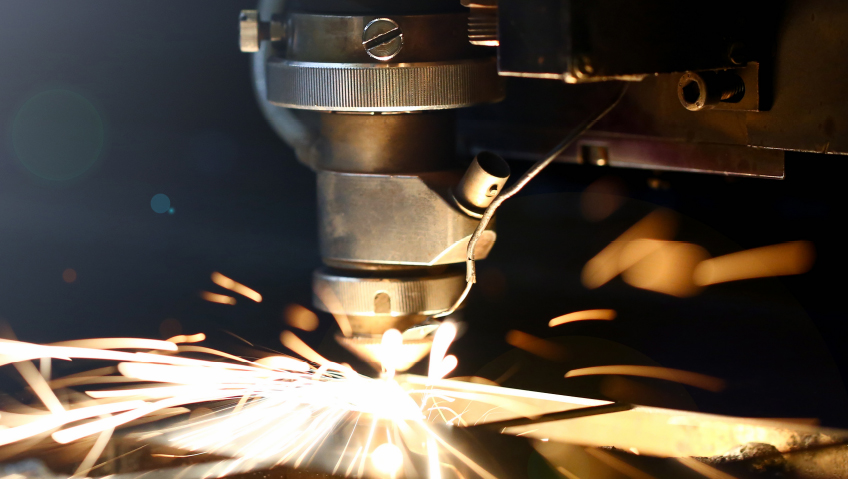For Roger Atkins, 2023 holds a lot of meaning for him both personally and professionally. This year marks the 80th anniversary of the National Tooling and Machining Association (NTMA), headquartered in the manufacturing hub of Cleveland, Ohio.
A proud, second-generation member of the NTMA for over four decades, Roger remembers his father joining the Association back in 1967. Today, as Association President—a role he has held for almost four years—Atkins has been witness to many of the changes in America’s tooling, die, and precision manufacturing sectors.
This year’s conference—to be held in Indianapolis from October 19 to 21—will be not only a time to discuss the future direction of the NTMA, but to acknowledge its rich, decades-long legacy.
“We will be celebrating this milestone at the conference,” he says. Along with having both newer and well-seasoned members present, the event will see articles in The Record, the official NTMA magazine, about the Association and what it has meant to its members and their companies over the years.
History of service
Founded in 1943 during the Second World War, the National Tooling and Machining Association has grown to about 1,100 members across the United States, and over two dozen chapters. At the time of its founding, eight companies came together and decided they faced the same challenge: the need for a skilled workforce. They believed it would be more fruitful to address the issue collectively rather than individually.
“Even today, there is still the need for a skilled workforce,” says Atkins. “That was the mainstay that started the Association in 1943, and it’s the mainstay that draws people to our organization in 2023, joining together and believing we can solve this problem together instead of as individuals.”
The structure of the NTMA is unique, as it is a national association but with a chapter structure. Research and development focuses on national programs and national support, yet there is also local support throughout the chapter structure.
To help address the shortage of new workers, NTMA chapters are encouraged to connect to local high schools, colleges, and technical programs. On a national level, Atkins works with Vice President and Chief Financial Officer Doug DeRose on governmental and advocacy efforts. With the NTMA for a decade, DeRose has an extensive background in accounting, finance, and the non-profit sector.
NTMA-U
Like many other trades, tooling and machining have faced obstacles, like that of bringing fresh talent into the fold. Along with apprenticeship programs and working with schools, the Association has an online training program called NTMA-U.
Developed with industry experts, NTMA-U boasts myriad features. Approved by the Federal Bureau of Apprenticeship, course-covered NIMS competencies are paired with resources and are available at any time. A full course description, including mechanical aptitude test and shop safety course information, can be downloaded at ntma.org/workforce-development/education.
“We are able to provide that to our members—both to our members at large who are not in a chapter as well as through our chapter structure across the U.S.,” says Atkins.
Along with working on student recruitment, the NTMA focuses on attracting more women and minority community members to the industry. The organization is partnered with Women in Manufacturing® which, over the past decade, “has grown to be the only national and global trade association dedicated to providing year-round support to women who have chosen a career in the manufacturing industry,” according to WiM.
Members are focused on welcoming previously incarcerated women, people of color, and those in depressed economic areas. “Those are some of the things we will be focused on at our conference in October, and we think they are all solutions,” says Atkins. Additionally, the organization works with Drew Crowe and the Manufacturing Renaissance program. A previously incarcerated young Black man, Crowe criss-crosses the United States talking to high school students about manufacturing opportunities.
One of the biggest recruitment tools is Manufacturing Day (MFG Day). Held nationally every October 6th, MFG Day sees thousands of manufacturers open the doors of their facilities, innovation centers, and other sites to schools. Open to students, parents, and educators, the popular event showcases the many diverse career options available in manufacturing.
Members of the NTMA are encouraged to participate in MFG Day and speak not only to students but also to parents about the many opportunities available in the sector. “Someone said to us, ‘If you can win their parents over, you can get them,’” says Atkins. “And someone else said, ‘No, if you can win the moms over, you can show students what’s available.’”
For many NTMA members, MFG Day has become MFG month. “You may open your shop that day, but you may also open it on and off to your local community over the full month of October,” says Atkins.
One of the biggest challenges isn’t necessarily getting kids interested in manufacturing, but actually getting them in on a visit to member facilities. Transportation is a challenge for many schools, and some NTMA member companies are investing in bringing young people to their shops, often located at fair distances.
This is an issue not only for interested students but also for workers, says Atkins. “That’s one of the big challenges we are trying to address across the country: how can we prevent transportation from being a hindrance to bringing a young person into our industry? It’s amazing how much of a hindrance that point is for many people who may be interested in the manufacturing business; it’s bigger than you think.”
Providing advocacy
One of the many ways the NTMA speaks for its members is through advocacy. Several recent initiatives include the U.S. research and development tax credit, working with the Occupational Health and Safety Administration (OSHA), and addressing workforce challenges.
A lifeline for many businesses, the tax credit has been used by businesses to support innovation and R&D, and to grow the economy. It was not renewed by the government in 2022.
“Where our members could write off 100 percent of their R&D expenses, the government didn’t [renew] that,” says Atkins. “One of our big focuses is reinstating (retroactive to 2022), the ability to fully expense R&D, as well as eliminate the amortization and capitalization requirements.” Instead of being able to write off 100 percent, members had to amortize and capitalize expenses over five years, costing them thousands of dollars.
Another issue is OSHA considering federal regulations covering indoor/outdoor workspaces when the heat index exceeds 80° Fahrenheit (27° Celsius). Believing that this initiative is more geared toward farm workers and people in restaurant kitchens, the NTMA is trying to convince OSHA that manufacturing is not part of that group and to be more specific with the heat regulations they are considering.
Finding workers, of course, remains one of the biggest challenges facing many industries. For NTMA, this means addressing some of the issues preventing people from getting into the sector or seeing it as a career option. To this end, the Association is working with the White House and some industry stakeholders on youth and registered apprenticeship programs. “The current administration is in support of apprenticeship programs, but they are primarily behind union-sponsored apprenticeship programs,” explains Atkins.
Benefits to members
Networking is one of the many perks of joining the NTMA; in fact, 57 percent of members said that they joined the Association because of networking opportunities with industry peers. Tooling and machining are often challenging, but being part of the NTMA means never having to go it alone because you are part of a network.
“As we always say, an NTMA-er will answer any question and help you any way they can,” comments Atkins. “My dad used to tell me, ‘Don’t work on solving a problem: some NTMA-er has already solved it and will tell you how to.’”
Primarily representing small to medium, privately held businesses, 82 percent of NTMA members have between one and 50 employees; 14 percent of members have 50 to 100 employees; and four percent of members have more than 100. “Our shop size goes from one employee to about 600,” says DeRose. “It comes down to what kind of benefits we’re providing those shops, and whether they’re utilizing our benefits to help them grow, which ideally is what we want them to do.”
Workforce and leadership development, a sales and marketing cohort, and cohorts in leadership and human resources are among the many other membership benefits, along with industry-specific benchmarking.
Offering different levels of membership, the NTMA welcomes machine shops—contract manufacturers who are joining to benefit their shop or manufacturing product for the U.S. industry—and industry partners (national associates), who provide goods and services to those companies. Additionally, the Association has educational members who can access reasonably priced training materials, textbooks, and other products.
“Our goal is to see U.S. manufacturing sustain itself for the next 20 or 30 years and allow people like me—who started in my early 20s—to be part of manufacturing,” says Atkins. “I’ve spent my entire career in manufacturing, so our goal is to leave NTMA and U.S. manufacturing in a strong position to allow young people to come into an industry and have an entire career,” he says.
“And so that’s where we focus our attention, trying to convince U.S. manufacturers that we are stronger together. Being a part of NTMA gives us strength in numbers. It allows us to be recognized for the value we truly bring to the American economy and employment.”






